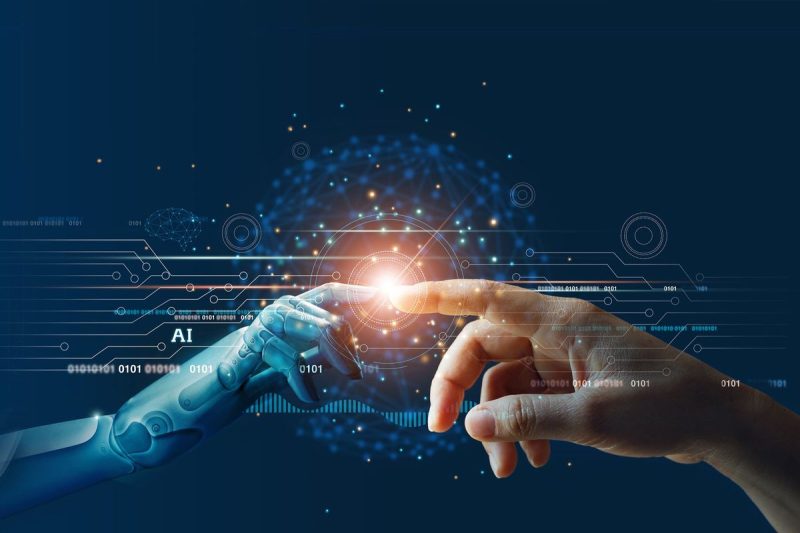Even as global economic challenges have disrupted businesses in recent years, companies continue to look for new opportunities in emerging technologies and for innovations that can reshape the world.
In its Top 10 Strategic Technology Trends for 2024 report, research and consulting firm Gartner examines the tech innovations its analysts believe will have the greatest impact on how successful businesses are in maintaining a positive financial position and operational excellence in the era of digital transformation. The report includes a list of the top emerging technologies to watch, and Gartner indicates that they could be key to sustainable enterprise growth.
A major theme in the report is the rise of technologies that will help businesses address three key priorities: protecting and preserving past and future investments, building the right solutions for the right stakeholders at the right time and delivering value for the changing environments of both internal and external customers.
″Technology disruptions and socioeconomic uncertainties require willingness to act boldly and strategically enhance resilience rather than rely on ad hoc responses,’ said Bart Willemsen, vice president analyst at Gartner. He added that to create value IT leaders need to make calculated risks and undertake reliable and durable investments.
The 10 emerging technologies below, including artificial intelligence (AI), continuous threat exposure management (CTEM) and sustainable technology, should drive disruption and opportunity over the next decade. These trends are especially important for those looking for new technologies for their business or for emerging technologies to invest in.
1. AI trust, risk and security management
Gartner predicts that by 2026, generative AI will dramatically change 70 percent of the design and development work that goes into web applications and mobile apps. While extremely exciting for tech nerds and businesses alike, advancements in AI technologies such as robotics and OpenAI’s ChatGPT are not without potential pitfalls.
The firm believes there are serious AI-related ethical and security concerns to consider, but says the most pressing issues for enterprises revolve around data breaches and cyberattacks.
A 2024 report from Menlo Security highlights the potential negative security impacts of generative AI, with a specific focus on employee use and the associated risks. The report found that, within a 30 day period in early 2024, 55 percent of data loss protection events stemmed from employees trying to add personally identifiable data into generative AI applications; 40 percent involved uploading confidential documentation.
“These uses of generative AI pose a cybersecurity risk due to the simplicity and speed with which information can be inputted, including customer lists or personally identifiable information,” according to Security Magazine.
An eye-opening study on the AI threat landscape released in March 2024 by HiddenLayer includes a survey that shows that, while 98 percent of IT leaders consider AI models to be a critical component to their business’ success, 77 percent of businesses have reported an AI-related breach in the last year.
A rigorous framework that supports AI model governance — such as AI Trust, Risk and Security Management (AI TRiSM) — is essential for risk mitigation, data protection, privacy controls and security breach prevention.
2. Continuous threat exposure management
Given the growing risks of cybersecurity attacks, Gartner has identified CTEM, or continuous threat exposure management, as a pressing need for businesses looking to avoid and lessen the impact of future threats.
As network and cybersecurity leader NSFOCUS points out, ‘(T)oday’s enterprises seamlessly integrate various innovative technologies such as cloud computing, big data, the Internet of Things (IoT), mobile security, and smart operations into every aspect of their operations. This undoubtedly significantly expands the attack surface for enterprises.’
With more employees working remotely, a proactive CTEM initiative should focus not only on external threats, but also on threats originating from cloud-based software-as-a-service (SaaS) platforms. This is where automated tools such as SaaS security posture management can help, along with actively engaging all stakeholders with the business’ CTEM plan.
‘By 2026, organizations that prioritize their security investments based on a continuous exposure management program will be 3x less likely to suffer a breach,’ according to Gartner’s report.
3. Sustainable technology
Next up, Gartner lists sustainable technology — a framework of digital solutions that can enable ESG outcomes for the enterprise and its customers — as one of the top 10 technology trends to watch in 2024.
‘Sustainable technology is increasingly important operationally — for optimizing costs, energy performance and asset utilization, for instance — but it also drives ESG outcomes like improving wellness and providing the traceability needed to ensure responsible business practices,” as per Gartner Director Analyst Autumn Stanish. “Sustainable technology also facilitates new business models and tech-enabled products to better serve customers.”
The firm believes that over the coming years, more and more enterprises will make investments in sustainable technologies that seek to reduce energy consumption and greenhouse gas emissions, reduce e-waste and manage ethical sourcing through supply chain transparency. Gartner also believes that by 2027, 25 percent of the compensation for CIOs will be tied to their sustainable technology impact.
Gartner sees opportunities for businesses to advance their ESG goals through “automation to reduce resource-intensive activities,” “(AI) and natural language processing to predict the impact of climate on business,” “advanced analytics to capture real-time performance analysis” and “cloud to transform processes and enable remote work.”
4.Platform engineering
Platform engineering is an emerging technology that provides developers and end users with the necessary tools and workflows to enable user-friendly, self-service capabilities for software engineering organizations. The goal is to increase end-user productivity and reduce the workload of software development teams.
“Platform engineering emerged in response to the increasing complexity of modern software architectures. Today, non-expert end users are often asked to operate an assembly of complicated arcane services,” Paul Delory, vice president analyst at Gartner, said. “(F)orward-thinking companies have begun to build operating platforms that sit between the end user and the backing services on which they rely.”
By 2026, Gartner predicts that 80 percent of software engineering organizations will have established platform teams that will be ‘internal providers of reusable services, components and tools for application delivery.’
5. AI augmented development
While the first two emerging technology trends on this list are aimed at combatting the cons of AI, it’s important to remember that there is also plenty of upside to the technology, especially for software developers.
Whether automating mundane tasks or speeding up the production of code, generative AI and coding assistants can optimize activities across all stages of software development, from design to testing.
‘Generative AI code generation tools like GitHub Copilot, Amazon CodeWhisperer and Google Codey are good choices for almost any enterprise seeking AI-enabled code generation tools,’ Gartner states. The firm predicts that by 2027, 70 percent of professional developers will use AI-powered coding tools. That’s up from 10 percent currently.
‘AI-augmented software engineering tools help developers write more and better code, because emerging AI tools are able to recommend the best code fragments to meet functional and operational requirements,’ said Arun Batchu, Gartner vice president, analyst. ‘Software engineers who use these tools are more productive, happier and tend to stay longer in their jobs than those who don’t.’
6. Industry cloud platforms
Between 2015 and 2022, the percentage of corporate data being stored in the cloud rose from 30 percent to 60 percent, according to Statista, “and has continued to grow as companies increasingly shift their resources into cloud environments in the hope of improving security and reliability next to advancing business agility.”
The industry cloud platforms category combines a number of cloud solutions and applications, including SaaS, platform-as-a-service and infrastructure-as-a-service technology designed for specific industries, such as financial services, healthcare, government, life sciences and retail.
In a recent Gartner survey, close to 39 percent of responding organizations reported that they had started implementing industry cloud platforms, while another 14 percent had pilot projects underway. Another 17 percent said they were considering deploying industry cloud platforms by 2026.
7. Intelligent applications
Going further than generative AI, intelligent applications augmented with AI are capable of learning from their interactions with data and users and using that knowledge to improve responses and user experience.
Gartner said 30 percent of new applications will use AI to develop personalized adaptive user interfaces by 2026, versus under 5 percent currently. One example of intelligent application, says the firm, is property insurance apps that can monitor weather and satellite data to automatically file claims when natural disasters such as rising floodwaters occur.
Increasing rates of innovation, declining costs and rising interest from businesses for AI-enhanced solutions are seen as driving factors for demand in this technology segment.
‘Intelligent applications recommend or automate actions instead of just providing analysis, so they can drive improvements — including better personalization, more efficient use of resources, improved accuracy, increased automation, more finely grained responses and decision support,’ commented Jim Hare, Gartner distinguished vice president, analyst. ‘Customers are increasingly demanding these types of intelligent outcomes.’
8. Democratized generative AI
The democratizing effect of generative AI is another trend in the emerging technology space that Gartner is tracking. Generative AI’s relatively low-cost, low-skill requirements and wide availability are cited by the firm as attributes of the technology that make it easily accessible and likely to be a huge disruptor over the next decade.
The benefits of this democratization include increased workforce productivity, faster time to market for new products and more customization opportunities.
Amazon Web Services and Siemens (FWB:SIE) have recently made moves in this space through a partnership to integrate Amazon Bedrock’s advanced generative AI technologies across the Siemens Xcelerator ecosystem.
“By integrating Amazon Bedrock into our low-code platform, we are democratizing generative AI technology and empowering everyone to create the applications customers need to become more competitive, resilient, and sustainable,” Roland Busch, Siemens CEO, said. “Making smarter applications without programming expertise accelerates innovation and helps companies to tackle skilled labor shortages.”
Gartner projects that the amount of enterprises using generative AI application programming interfaces and models, or deployed generative-AI-enabled applications — or both — in their production environments will increase from 5 percent in 2023 to 80 percent by 2026.
9. Augmented connected workforce
Gartner describes the concept of augmented connected workforce (ACWF) as “a strategy for optimizing the value derived from human workers.” ACWF combines intelligent applications, workforce analytics and automation to support workers in closing skills gaps so enterprises can quickly scale talent to meet business goals.
Gartner notes that through 2027, its analysts expect to see 25 percent of CIOs using ACWF initiatives to reduce time to competency by 50 percent for key roles.
“An Augmented Connected Workforce is an approach that combines capabilities with advanced technologies to establish a collaborative, connected, and empowered work environment,” according to Raktim Singh, senior product leader at IT consulting firm Infosys (NYSE:INFY). “It encompasses AI, IoT, AR, and collaborative platforms to enhance productivity, streamline communication processes, and provide real-time decision-making insights.”
10. Machine customers
Executives surveyed by Gartner expect that by 2030 at least 25 percent of all consumer purchases and business replenishment requests will be done by machines. These machine customers are smart devices that use AI and IoT technologies to make purchases of goods and services.
‘Sales, marketing and customer service must all prepare to attract, retain and serve the unique needs of machine customers — or risk losing revenue,’ Gartner states.
CNBC recently reported that Amazon (NASDAQ:AMZN), Walmart (NYSE:WMT), Tesla (NASDAQ:TSLA) and Carvana (NYSE:CVNA) are already working with machine customers. “Machine customers are already among us. They’re performing the tasks we’d normally do as human customers,” said Don Scheibenreif, vice president and analyst with Gartner’s customer experience research group.







































